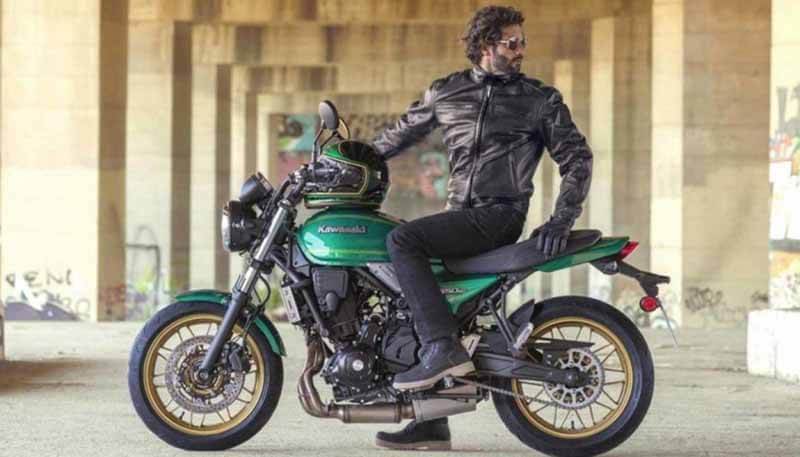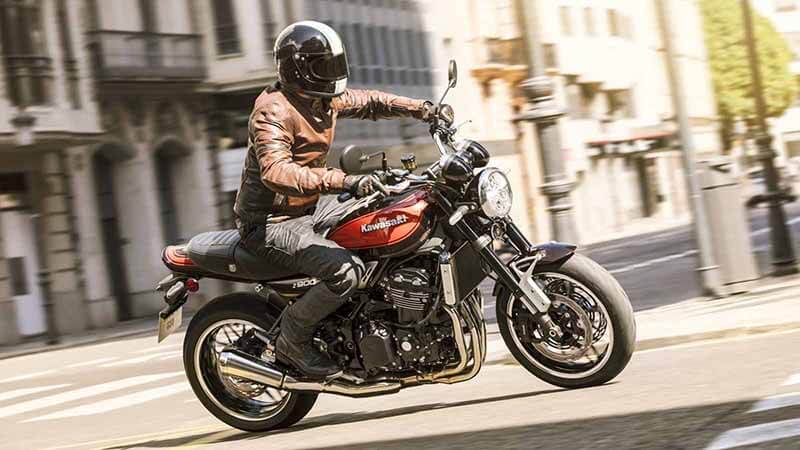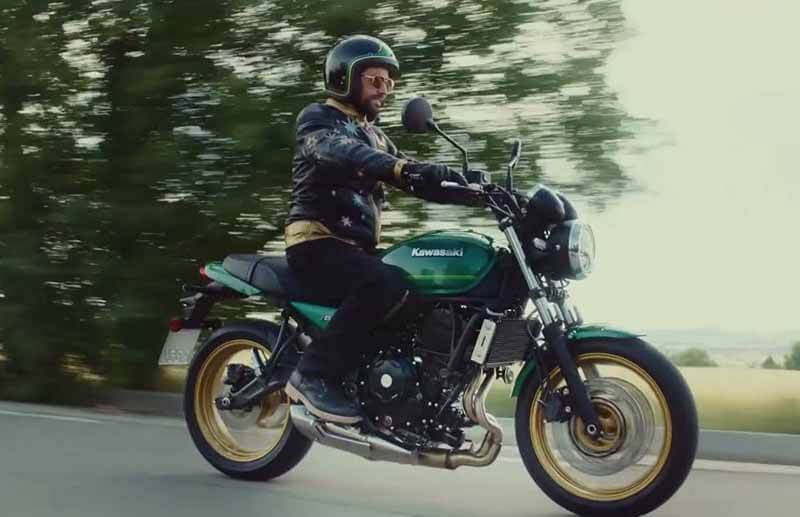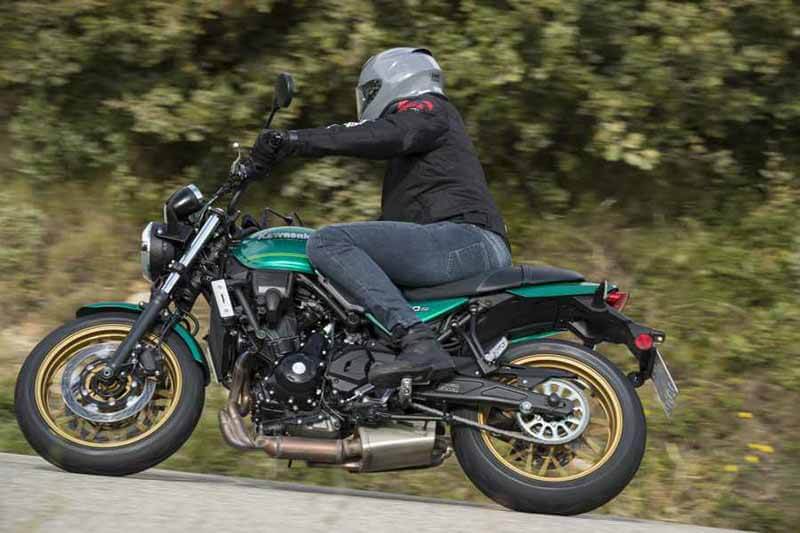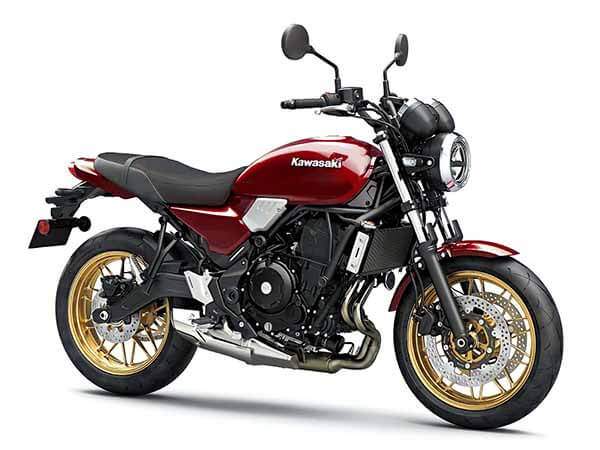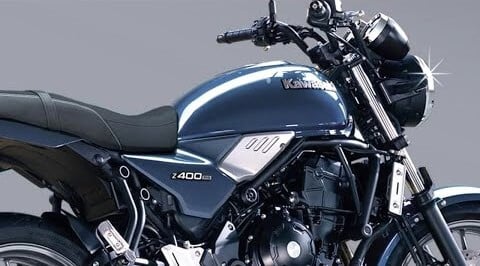The future Kawasaki Z400RS will be based on the Kawasaki Z400, which is currently on sale internationally, and will share components with the Ninja 400, which was previously available in India.
This could be the company’s most cheap RS motorbike, with the same design cues as the Z650RS and Z900RS. Both bikes are based on the legendary Kawasaki Z1 from the 1970s.
To complete the design, there will be a new round LED headlamp, twin-pod instrument cluster, single-piece seat, chrome-finished round rearview mirrors, and multi-spoke alloy wheels.
The model will be powered by a 399cc parallel-twin engine that produces 47.5 horsepower and 38 Nm of peak torque and is mated to a 6-speed transmission. It’s likely that the suspension and brake systems will be carried over as well.
According to reports, the Kawasaki Z400RS could make its premiere at EICMA before the end of this year, with a global launch following next year in various regions.
The Kawasaki Z400RS will be an intriguing motorcycle, with a price tag that will be comparable to the Royal Enfield Interceptor 650.
What are the top features of the Kawasaki Z400 RS?
The Kawasaki Z400RS will, for the most part, follow the same modern-retro design approach as its larger siblings, the Z650RS and Z900RS.
Retro stylistic elements including round headlamps and rearview mirrors, classic dual-dial instrument pods, teardrop-shaped fuel tank, wide ergonomically placed handlebar, spoke-style cast wheels, and flat seat design are expected on the motorcycle.
The bike will have a relaxing riding position with footpegs in the middle. The Z400RS will include a variety of modern innovations in terms of functionality.
It will almost certainly have all-LED lighting and an underfloor exhaust system. The smaller brother, like the Z650RS, will have a blacked-out engine and frame.
The Z400RS will have a trellis structure constructed of high-tensile steel that is both strong and light. The frame, like its larger siblings, will allow for simple maneuvering in confined spaces as well as improved control and handling at high speeds.
Front telescopic forks and swingarm rear suspension are built into the frame. The braking system will be the same as the Z400, with a 310 mm front single disc and a 220 mm rear single disc. ABS with dual channels will be standard.
What is the engine configuration of the Kawasaki Z400RS?
The Kawasaki Z400RS will be powered by the same 399cc engine that powers the naked Z400. The DOHC motor has two cylinders and is liquid-cooled. It produces 47.5 bhp max power and 38 Nm peak torque.
It’s paired with a 6-speed manual transmission with a return shift. The Ninja 400 sportbike also uses this engine. It’s noted for its smooth performance, responsive power delivery, and plenty of low-end torque.
Engine specification:
| Engine type: | 1. DOHC
2. 399cc 3. Liquid-cooled 4. Blacked-out engine |
| Transmission: | 6 speeds |
| The number of cylinders: | 2-cylinder |
| Maximum Power: | 47.5 bhp |
| Maximum/Peak Torque: | 38 Nm |
What is the economic riding indicator in Kawasaki Z400RS?
Economical Riding Indicator is another important feature included with the Z400RS. This essentially aids the operator in increasing the bike’s fuel efficiency.
Kawasaki RS bikes are usually more expensive than their naked equivalents. It will have no direct competitors due to its exorbitant pricing. However, it may be a viable alternative to the Royal Enfield Interceptor 650.
Chassis and suspension:
| Riding position: | Straight upright |
| Body type: | Retro-style |
| Chassis: | 1. Trellis
2. High-Tensile Steel |
| Front Suspension: | Telescopic-Fork |
| Rear Suspension: | Uni-Trak Swingarm |
| Body Graphics: | Yes |
What are the advanced features of the Kawasaki Z400RS?
Advanced features such as assist, and a slipper clutch will be available on the bike. During quick deceleration or an unintentional downshift, this enables smooth gear transitions. This feature also helps avoid issues like rear tire slipping and hopping when riding at fast speeds.
The new Z900RS will be used for most of the design. The Z400 RS will be designed in the same current throwback style. On the Z650RS, the same thing can be noticed. The same circular headlight with round LED DRL as the rim can be seen.
With the traditional designed dual instrument cluster and rounded classic rearview mirrors, The teardrop-shaped tank has an ergonomically situated handlebar. The flat shape of the seat complements the retro look of the spoked style cast wheel.
The taillight will likewise be a modern LED design with footpegs in the middle. As with all of the siblings, the exhaust will be underbelly. The blacked-out engine chasing will also be shared.
A lightweight high tensile steel trellis frame is planned to be used for the bike’s chassis. The redesigned frame is easier to maneuver and provides more stability at high speeds.
The business employed telescopic forks for the front suspension and a mono-shock suspension for the rear. The Z400RS will be equipped with 310 mm single discs in the front and 220 mm single discs in the rear, as well as dual-channel ABS as standard.
Top features of Kawasaki Z400RS:
- Responsive power delivery
- Smooth performance
- Abundant low-end torque
Brake specification:
| Front brake: | Single disc
310 mm |
| Rare brake: | Single disc
220 mm |
| Dual-channel ABS: | Standard |
About the author: Michael Parrotte was the Vice President of AGV Helmets America, and a consultant for KBC Helmets, Vemar Helmets, Suomy Helmets, Marushin Helmets, KYT Helmets, Sparx Helmets. In addition, he is the founder and owner of AGV Sports Group.
M/Z

